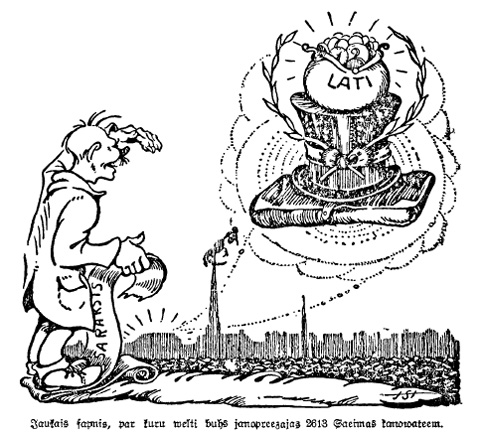Summer will soon be over in Latvia. The first day of school on Sept. 1, a day for celebrating educators and education, is a sure sign. So is the new political season, signified by the Sept. 17 parliamentary election.
We have been collecting a few notes and responses to readers related to the election, so here’s a reminder about mail ballots, an update on what the Latvian Association of Sweden is up to, and some background on how much members of the Saeima are paid.
Voting by mail
The deadline for voters abroad to apply for absentee ballots is Sept. 2. Applications, including a valid Latvian passport, must be received by that date at one of 21 Latvian embassies or consulates outside the homeland that are accepting them.
Details on the process, and dowloadable copies of the application form, are available from the website of the Central Election Commission (Centrālā vēlēšanas komisija) in Rīga, www.cvk.lv.
Absentee ballots will be mailed to applicants between Sept. 3-7, according to the website.
Remember that on election day a total of 77 polling stations will operate in locations outside Latvia (see our story, Polling places to include Scotland, but Chile and Venezuela dropped). Polling stations will be open from 7 a.m. to 8 p.m. local time. Voters must be at least 18 years old and must bring with them a valid Latvian passport.
Vienpadsmitnieks
It seemed like just a year ago that some folks affiliated with the Latvian Aid Committee of Sweden (Zviedrijas Latviešu palīdzības komiteja) let loose an unusual publication, Desmitnieks (The Tenth), focused on the election for the 10th Saeima.
Wait, it was a year ago! Aug. 16, to be exact, was the date of the first issue of the print and Web version of the informative publication that included analysis and commentary about the election and key issues.
But at the end of May then-President Valdis Zatlers initiated the dismissal of the 10th Saeima and in July voters overwhelmingly followed through. So here we go again.
The same folks are working now on Vienpadsmitnieks (The Eleventh), except now they are affiliated with the Latvian Association of Sweden (Zviedrijas Latviešu Apvienība).
“We want to address those who perhaps are doubting the sense of participating (in the election), those who perhaps have given up on all that is related to the workings of the Latvian state and society,” according to an email announcement from the association’s Jānis Krēsliņš.
Vienpadsmitnieks will be available on the association’s website, zla.lv.
Last year’s 10 issues of Desmitnieks have been archived and also are available on the association’s website.
The Latvian Association of Sweden, by the way, is relatively new. It serves as an umbrella for various organizations and, as noted on its website, is heir to the long-standing Latvian Aid Committee of Sweden.
Show me the money
A reader asked what members of Latvia’s parliament are paid. The simple answer is 1,417 lats per month.
However, some members get more for leading their party’s caucus (frakcija) or for heading one of the many commissions that are charged with examining proposed legislation and other duties. Members of the presidium (such as the speaker of the Saeima) also get extra pay.
In July, for example, most deputies made 1,417 lats. The highest paid member of the Saeima was the speaker, Solvita Āboltiņa, who made 2,303 lats. The lowest paid member was Juris Žūriņš, who made just 472 lats and 33 santīms. That’s because he only joined the Saeima on July 21, replacing Guntars Galvanovskis of the Vienotība (Unity) bloc, who decided to quit the party and the parliament, according to Neatkarīgā Rīta Avīze and other Latvian media.
Members also get compensation for housing and transportation.
Details can be found on the Saeima’s website, www.saeima.lv.
For comparison, the average gross pay for Latvian workers in March was 465 lats, according to the Central Statistical Bureau (Centrālā statistikas pārvalde).

The Latvian Association of Sweden has launched Vienpadsmitnieks, a special publication examining the forthcoming parliamentary election in Latvia.




